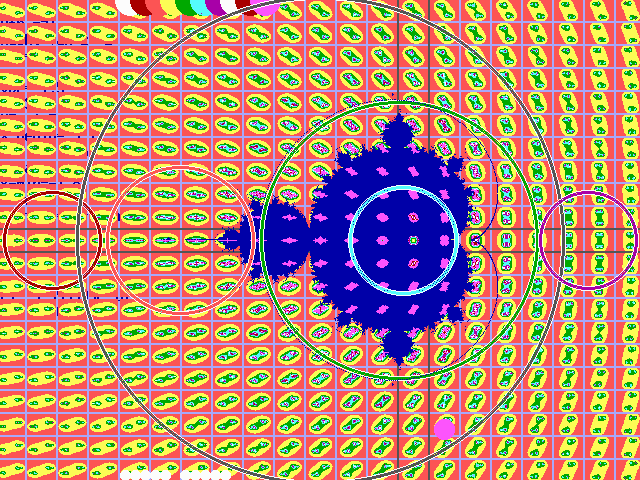Creative Thinking
The Creative Process
An interview with Gerd K. Binnig
According to the Nobel Prize laureate
for physics Gerd Binnig, new ideas are generated only when people receive
enough new stimuli. In an interview he uses his theory of “fractal Darwinism”
to explain how something new comes about.
Mr Binnig, why are you, as a physicist, interested in creativity?
I became interested in it more by chance – in the framework of several
interviews I gave about 20 years ago. We were talking about the invention
of tunnelling microscopy and discussing whether this was a creative
process. I later realized that the procedures involved in developing
the microscope could not be brought into line with the traditional notion
of creativity, and that I had a fundamentally different view on this
issue. That is why I began studying it intensely.
What do you understand
precisely by creativity?
I call my concept “fractal Darwinism”.
With his theory of the evolution of life Darwin already described important
fundamentals of creativity, but not everything. Only that which is fractal
brings the aspect of synergy or cooperation between living creatures
or thoughts into play. By combining both theories we can understand
and promote creative processes. In order to explain more precisely what
I mean I have to go back a bit. Up to 20 years ago scientists divided
problems into individual, easily manageable parts so as to simplify
and then analyze them. I refer to this as single-scale thinking. The
physicist remained at the scale of atoms, the biologist at that of cells
– to put it briefly. When I spoke about multi-scale thinking people
at the time looked at me askance. Only very very few scientists thought
as I did then. Benoît Mandelbrot and Kenneth Wilson were the pioneers
here.
What do you mean by multi-scale?
Mandelbrot, for example, linked forms in nature with mathematics. He
claimed that nature was full of geometry. He discovered and mathematically
described structures in which, geometrically, each part resembled the
whole. This is the case, for example, with the course of a coastline.
Irrespective of whether you observe it from a satellite or a ship or
the perspective of a microbe – the patterns resemble each other on each
of the scales. This feature is called self-similarity. Thanks to Mandelbrot’s
geometry, such structures can be calculated using very simple formulae.
In the resulting fractal images you can repeatedly enlarge details and
discover recurrent patterns. I go a step further with my creativity
model: Mandelbrot’s insight applies not only to geometry but also to
processes. They too are self-similar, meaning that the structure of
a process repeats itself to a degree in its individual components. You
just have to abstract enough.
What does that have to do with creativity?
Creativity is a very self-similar process. Changes on a small scale
add up, changing structures at higher levels, which in turn have an
impact on the small structures. At the same time, creativity is a process
that functions like evolution: in keeping with the mechanisms of reproduction,
mutation, selection, isolation and cooperation. The latter follows from
the multi-scale approach. For example: you play on a football team.
If you think about survival strategies, you will presumably realize
that the survival of the team is necessary for your personal survival.
So, in order to have a chance as a good player, you have to work with
the team, meaning you have to make your contribution to it winning.
You think not just from your own viewpoint but from that of the group.
You change scales. The mechanism at the basis of the footballer’s behaviour
is cooperation.
How does fractal Darwinism function
in practice?
I can demonstrate that nicely with the development of the scanning tunnelling
microscope. I was working at the time in the research laboratory at
IBM in Rüschlikon. We wanted to examine something that was part
of a very large problem: Then, in the late 1970s, physicists were not
yet able to observe a single individual atom on the surface of metal.
But we wanted to know how their features change when the atoms are not
so regularly ordered in the crystal as the theory prescribes, but rather
continually fall out of line. The scanning tunnelling microscope was
developed in the context of our work on that problem, without us intending
to invent it.
So you owe the Nobel Prize to chance?
In a certain sense, yes. Anyone who wants to be creative should not
have a concrete objective, like the invention or improvement of a microscope.
Even then he can of course be creative in a particular framework. But
man is creative at a higher level when he wants to solve a problem,
because he proceeds differently. He seeks the components necessary to
solve the problem.
Is this approach really innovative?
I want to solve a problem, which I do
in individual stages, and in the end something new emerges.
Haven’t people been working like that
for centuries?
I cannot say straight away: We will now take the logical path and then
invent a tunnelling microscope. A really creative solution is so complex
that it cannot be found by logic. I would have to work through millions
and millions of possibilities to arrive at it logically. Human life
is not long enough for that. So I have to do it differently. I have
certain approaches and ideas, but chance plays a very big role. For
example: Someone expresses a thought in a lecture. I take it up and
integrate it into my thought process. For me, that is like a mutation
that enters into my brain from outside and survives my selection process
– like in evolution. Certain things assert themselves, others die off
relatively quickly. It’s the same with ideas. Some emerge, do not survive
long and then disappear forever. Other ideas are latently there, because
they stand up to analysis.
How can managers, for example, use your concept to be more creative?
This may sound surprising, but I believe they have to know less and
think more slowly. If I am always just ticking off topics, creativity
has no chance. That happens even when I am working on something intellectually
ambitious. Man must start to dream. He must not allow himself to become
embroiled too much in the everyday and must constantly create room to
manoeuvre. Breaks are extremely important if new ideas, or connections
between existing but isolated knowledge, are to reach our consciousness.
Anyone who wants to work creatively needs time out.
Is it realistic to think that busy researchers or managers will take
that time?
Of course it is very difficult to create room for free development.
But not in my case. I have strong defensive reactions against such tension
in everyday life. The subconscious is very much involved here. If I
constantly feed it new impressions it is busy. As a rule, it processes
the information during sleep and connects it up anew. That is why we
dream. When we take in something new, we have to go through in our minds
whether the old knowledge still applies. We see this when we simulate
creativity in computers. If I simply add new knowledge to the existing
knowledge, it just destroys the old knowledge.
So we shouldn’t learn anything?
For a while, at least.
Can employees in companies with their
mostly rigid structures be creative at all?
I think that large companies in general are not very creative. Perhaps
they do not need to be any more, because they have already achieved
a lot simply by their size. But if they are completely uncreative, one
day they will no longer be successful.
--------------------------------------------------------------------------------------
More about Professor Dr. Gerd Binnig
The experimental physicist and holder of the 1986 Nobel Prize for physics,
who was born in Frankfurt, sees evolution as a creative process. For
many years the inventor of the scanning tunnelling microscope has been
trying to arrive at a deeper understanding of creativity.
20.09.2004 / 25.05.2006
© Deutschland magazine www.magazine-deutschland.de



